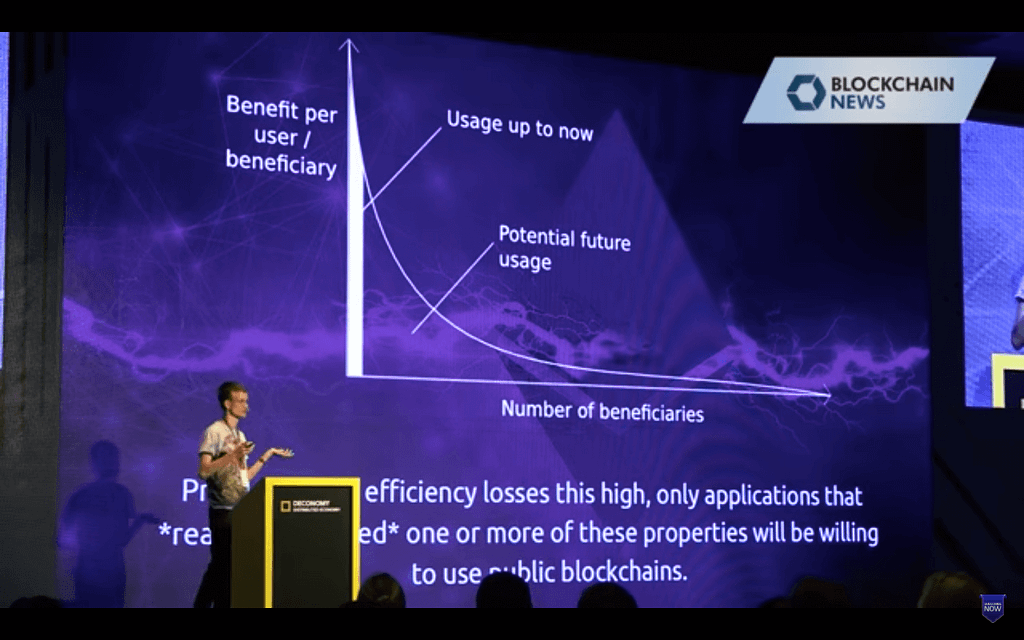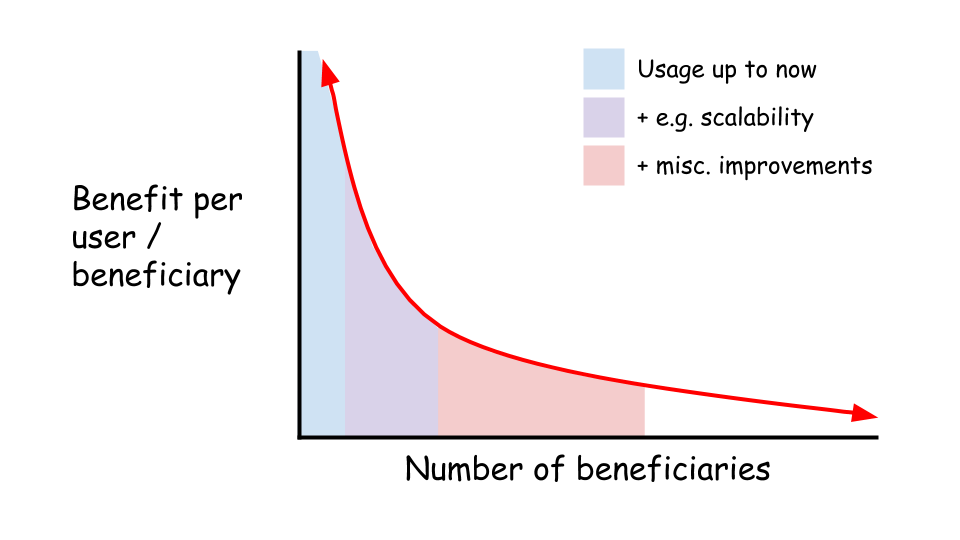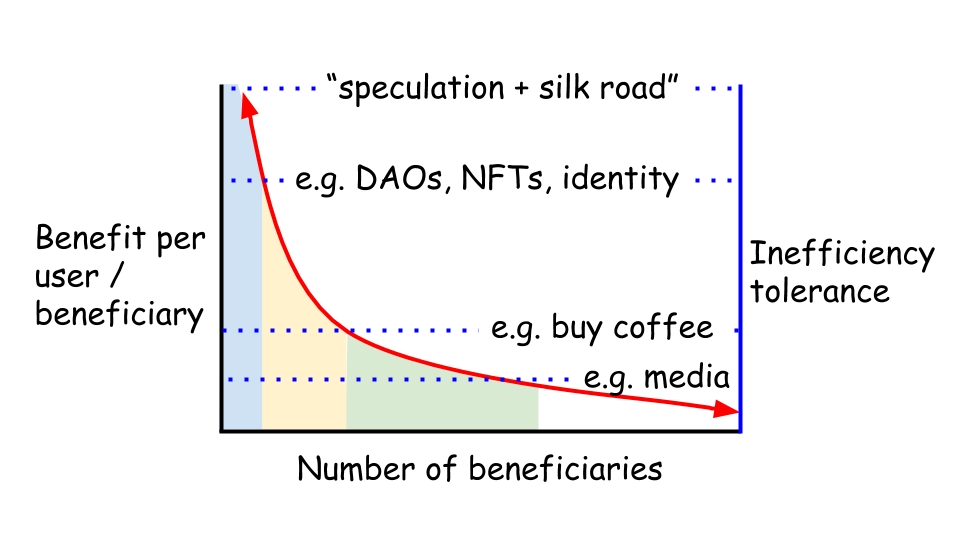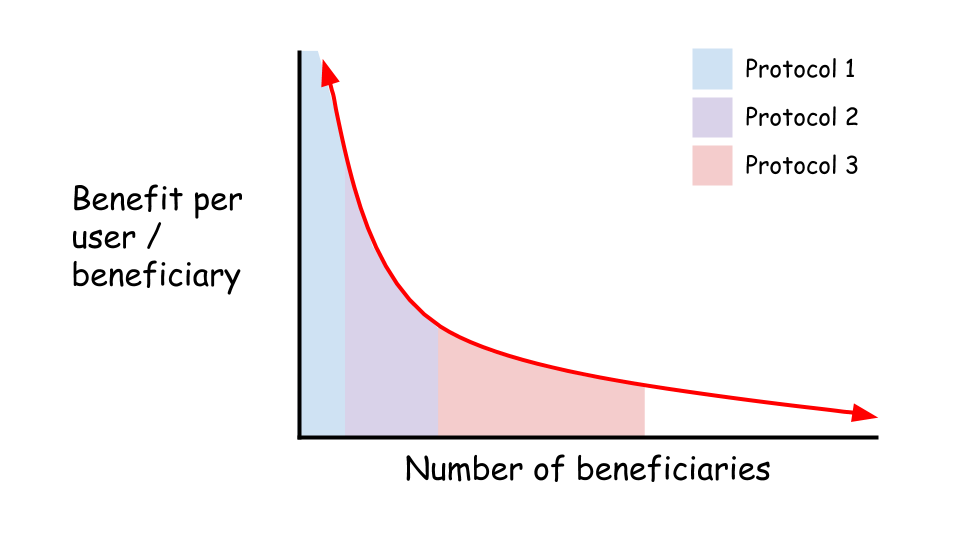Latest news about Bitcoin and all cryptocurrencies. Your daily crypto news habit.

In order to move along the curve, we need to reduce inefficiencies in blockchain compared to non-blockchain technologies. As he says, “with efficiency losses this high, only applications that really needed one or more of these properties will be willing to use public blockchains.”
In other words, you could expect the adoption of blockchain technology to look something like this:
This is the first way to interpret this curve. Incremental improvements to the technology enable blockchain to serve more people. Improving properties like scalability decrease inefficiencies, allowing us to serve more users for more use cases.
The second way to interpret this graph is by adding another axis representing the amount of inefficiency a beneficiary is willing to tolerate to receive the benefits. Using Vitalik’s description, today’s speculators and silk roaders are willing to tolerate a high degree of inefficiency.
You can imagine a set of use cases that benefit greatly from the inherent properties of blockchain, but the inefficiency is still too high for users to adopt. We can call the point where the benefits equal the inefficiency the inefficiency tolerance threshold. Users refuse to adopt blockchain for their use case until the curve is below the inefficiency tolerance threshold.
And so on and so forth until inefficiency reaches zero and all users are better served using blockchain.
We often ask the question “does this project need blockchain?” This curve is a helpful model to answer that question. The further to the left, the more the user needs the benefits of blockchain.
The third way to think about this curve is to describe one way the market share for smart contract protocols plays out.
Perhaps the unique trade-offs of protocols place them at different parts of the curve. You can imagine a highly secure and decentralized but inefficient protocol on the left and a more centralized, efficient protocol on the right. Because the users have different preferences at each point on the x-axis, they should be better served by a protocol catering to the trade-offs they prefer.
However you look at the curve, one thing is clear: we’re still very early on and there’s a lot of work to do.
Originally published at www.tonysheng.com on April 9, 2018.
The 3 Paths to Blockchain User Adoption was originally published in Hacker Noon on Medium, where people are continuing the conversation by highlighting and responding to this story.
Disclaimer
The views and opinions expressed in this article are solely those of the authors and do not reflect the views of Bitcoin Insider. Every investment and trading move involves risk - this is especially true for cryptocurrencies given their volatility. We strongly advise our readers to conduct their own research when making a decision.


